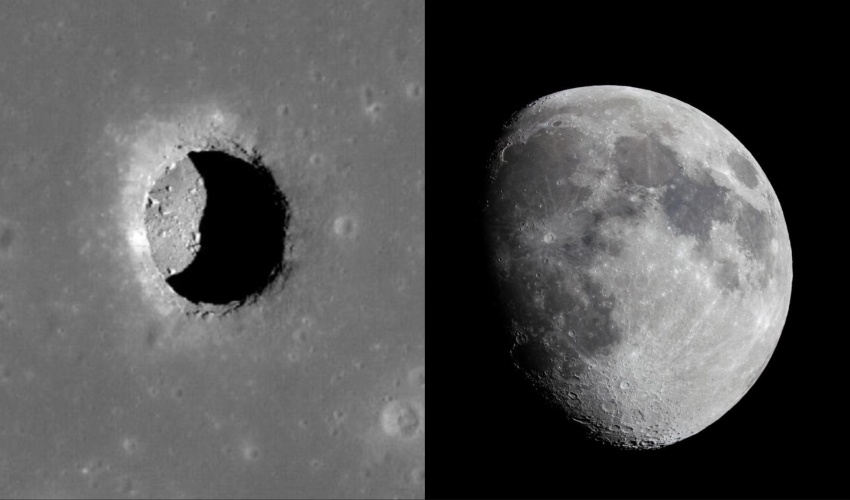Planetary scientists have confirmed the presence of a tunnel system on the moon, igniting excitement about the potential for more hidden structures beneath its surface.
This revelation comes from a reanalysis of data collected by NASA's Lunar Reconnaissance Orbiter (LRO), which first captured images of a mysterious pit in the moon's Mare Tranquillitatis, or "Sea of Tranquility," in 2010.
The newly analyzed observations, published in the journal Nature Astronomy, reveal that the pit is not merely a surface anomaly but part of a larger lunar cave system. "We're just seeing the tip of the iceberg," said Wes Patterson, a planetary scientist at the Johns Hopkins University Applied Physics Laboratory and coauthor of the study. This statement underscores the vast potential for discovering more subterranean structures on the moon.
The researchers utilized data from the LRO's Miniature Radio-Frequency (Mini-RF) radar instrument to probe the pit's interior. The radar signals, bouncing back from the depths of the pit, provided critical evidence of a tunnel extending approximately 40 meters in width and potentially reaching up to 80 meters in length. This tunnel is believed to be a lava tube, a type of volcanic formation created by the flow of molten rock beneath the moon’s surface.
Lava tubes on Earth are well-documented and can be explored on foot, offering a natural pathway through hardened lava. The discovery of such a structure on the moon suggests that similar features could be widespread, hinting at a network of subterranean passages formed by ancient volcanic activity.
Patterson’s findings are the first direct evidence of a lunar conduit linked to one of these pits, marking a significant milestone in lunar exploration. The implications of these discoveries are profound, potentially offering new insights into the moon's geological history and its volcanic past.


























